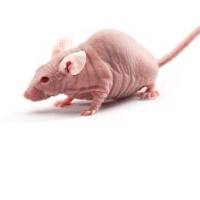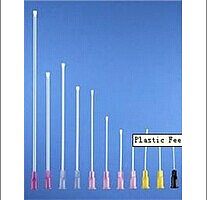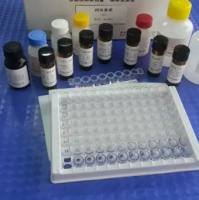Exercise Performance Tests in Mice
互联网
- Abstract
- Table of Contents
- Materials
- Figures
- Literature Cited
Abstract
Maximal exercise performance is a multifactorial process in which the cardiovascular component, the innervation of the musculature, and the contractile and metabolic properties of skeletal muscle all play key roles. Here, protocols are provided for assessment of maximal running capacity of mice on a treadmill, with a combination of short high?intensity paradigms primarily intended to test for maximal power and cardiovascular function, and longer low?intensity paradigms to assess endurance and oxidative metabolism in skeletal muscle. The coupling of treadmill running to indirect calorimetry, to correlate performance measurements to maximal oxygen consumption, is also described. Curr. Protoc. Mouse Biol. 1:141?154. © 2011 by John Wiley & Sons, Inc.
Keywords: exercise; running; treadmill; VO2max; endurance power
Table of Contents
- Introduction
- Basic Protocol 1: Measurement of Forced Exercise Performance on a Treadmill
- Basic Protocol 2: VO2max Determination with a Treadmill Coupled to Indirect Calorimetry
- Commentary
- Literature Cited
- Figures
Materials
Basic Protocol 1: Measurement of Forced Exercise Performance on a Treadmill
Materials
Basic Protocol 2: VO2max Determination with a Treadmill Coupled to Indirect Calorimetry
Materials
|
Figures
-

Figure 1. Example of a commercial 5‐lane treadmill setup for mice (Panlab). The treadmill is a dual system for mice and rats, but is shown in a mouse configuration including dedicated stimulation pads and lane adapters. View Image -

Figure 2. Total number of aversive stimulations received during daily sessions of familiarization to the setup. Ten wild‐type C57BL/6J mice were subjected to daily sessions of familiarization to the treadmill for 3 days. Each session consisted of a 5‐min run at 15 cm/sec using electrical stimulation at 0.2 mA as aversion. The total number of electrical stimulations over 5 min was recorded for each mouse and plotted. View Image -

Figure 3. Example of a commercial metabolic treadmill setup for mice (Columbus Instruments). View Image -

Figure 4. Example of graphical user interface displaying real‐time measurement of VO2 and RER (Columbus Instruments). View Image -

Figure 5. Individual oxygen consumption and respiratory exchange ratio (RER) during maximal oxygen consumption (VO2 max) protocol. 24‐week‐old male C57BL/6J mice were subjected to a VO2 max protocol with +10° treadmill angle. Left panel: Oxygen consumption (VO2 ) at each belt speed ( n = 8). Right panel: Respiratory exchange ratio at each belt speed ( n = 8). View Image -

Figure 6. Cumulative number of aversive stimulations received as a function of time in power and endurance performance tests. 18 wild‐type C57BL/6J mice were subjected to a power test and an endurance test as described, using electrical stimulation at 0.2 mA as aversion and a stimulation rate exceeding 20 stimulations per min as termination criteria. The cumulative number of electrical stimulations was recorded during the entire test every minute and plotted as a function of time for every individual mouse. View Image -

Figure 7. Distance traveled, running time, and maximal speed of wild‐type C57BL6/J mice in power and endurance performance tests. The data from the tests described in Fig. 6 were extracted for each individual mouse and plotted as mean ± SEM. View Image -

Figure 8. VO2 max and running distance of sedentary and trained lean and diet‐induced obese mice. 8 week old male C57BL/6J mice were fed with a standard chow diet (CD) or a high‐fat diet (HFD) (60% kcal fat) for 16 weeks ( n = 8 per group). These “sedentary” mice were subjected to a VO2 max measurement with a +10° angle for CD‐fed mice and 0° angle for HFD‐fed mice. Upon completion of this experiment, mice were maintained on these diets and allowed free access to a running wheel for 10 days. After this period, a second VO2 max protocol was performed with these “trained” animals under the same condition (+10° angle for CD‐fed mice and 0° angle for HFD‐fed mice). Data are represented as mean ± SEM and * represents a statistical significant difference (p<0.05) using a 1‐way ANOVA followed by a Bonferroni test. View Image
Videos
Literature Cited
| Literature Cited | |
| Bernstein, D. 2003. Exercise assessment of transgenic models of human cardiovascular disease. Physiol. Genomics 13:217‐226. | |
| Billat, V.L., Mouisel, E., Roblot, N., and Melki, J. 2005. Inter‐ and intrastrain variation in mouse critical running speed. J. Appl. Physiol. 98:1258‐1263. | |
| Booth, F.W., Laye, M.J., and Spangenburg, E.E. 2010. Gold standards for scientists who are conducting animal‐based exercise studies. J. Appl. Physiol. 108:219‐221. | |
| Dawson, C.A. and Horvath, S.M. 1970. Swimming in small laboratory animals. Med. Sci. Sports 2:51‐78. | |
| Kemi, O.J., Loennechen, J.P., Wisloff, U., and Ellingsen, O. 2002. Intensity‐controlled treadmill running in mice: Cardiac and skeletal muscle hypertrophy. J. Appl. Physiol. 93:1301‐1309. | |
| Konhilas, J.P., Maass, A.H., Luckey, S.W., Stauffer, B.L., Olson, E.N., and Leinwand, L.A. 2004. Sex modifies exercise and cardiac adaptation in mice. Am. J. Physiol Heart Circ. Physiol. 287:H2768‐H2776. | |
| Kregel, K.C., Allen, D.L., Booth, F.W., Fleshner, M., Henriksen, E.J., Musch, T.I., O'Leary, D.S., Parks, C.M., Poole, D.C., Ra'anan, A.W., Sheriff, D.D., Sturek, M.S., and Toth, L.A. 2006. Resource Book for the Design of Animal Exercise Protocols. American Physiological Society, Bethesda, Md. | |
| Lerman, I., Harrison, B.C., Freeman, K., Hewett, T.E., Allen, D.L., Robbins, J., and Leinwand, L.A. 2002. Genetic variability in forced and voluntary endurance exercise performance in seven inbred mouse strains. J. Appl. Physiol. 92:2245‐2255. | |
| Lightfoot, J.T., Turner, M.J., Debate, K.A., and Kleeberger, S.R. 2001. Interstrain variation in murine aerobic capacity. Med. Sci. Sports Exerc. 33:2053‐2057. | |
| Peronnet, F. and Aguilaniu, B. 2006. Lactic acid buffering, nonmetabolic CO2 and exercise hyperventilation: A critical reappraisal. Respir. Physiol. Neurobiol. 150:4‐18. | |
| Savaglio, S. and Carbone, V. 2000. Scaling in athletic world records. Nature 404:244. | |
| Thomas, C., Marcaletti, S., and Feige, J.N. 2011. Assessment of spontaneous locomotor and running activity in mice. Curr. Protoc. Mouse Biol. 1:185‐198. |









